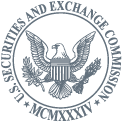Active non-transparent ETFs (ANTs) are set to go marching one by one onto US exchanges, thanks to relaxed regulations around transparency.
Last year, the Securities and Exchange Commission (SEC) watered down its ETF transparency requirements. In so doing, the regulator paved the way for mutual fund managers to enter the ETF industry. Historically, mutual fund managers have hesitated to list ETFs in fear that daily transparency would require giving away their best investment ideas.
But according to Ben Slavin, head of ETFs at BNY Mellon, the SEC’s new approach is succeeding in winning over sceptical mutual fund managers. He said:
“We’re seeing a very high volume of … inquiries from asset managers who are looking at this structure and trying to figure out the best path in...We’re likely to see both product development and new entrants continue to flow into the market and I think that trend will accelerate.”
He added that the SEC’s relaxations were particularly helpful to mutual funds that invest in small companies. This is because predatory traders – sometimes called “front runners” – can more easily gobble up all of a small company’s shares after learning that a mutual fund is interested in them.
While ANTs are seeing a lot of interest there have been some snags along the road.
Among them is the fact that there is many different types of ANT. Because of the way American patent laws work, there are currently several different ANT “models” available. These models are privately owned by different companies – such as Precidian and Blue Tractor. The multitude of models has meant that mutual fund managers have not coalesced around a particular structure.
Another snag has been the strong preference investors have developed for passive and transparent ETFs. This shows up quite clearly in ETF “inflows” – which measure how much money investors are putting in different ETFs. According to data from Ultumus, ANTs have taken in just 0.2% of total ETF inflows in 2020. This meant that more than 99% of new money went into passive or transparent ETFs.
A final, potential, snag has been the acronym "ANT" and the tag "non-transparent". Many ETF advocates have argued that ANT ETFs are opaque as their disclosure frequencies aren't that different to hedge funds. This is a problem, they believe, as transparency is almost always better. But supporters of active ETFs have criticised the acronym, claiming its unfair.
For ANTs to overcome these snags, it will be crucial that they perform, Slavin said.
“The product development that we’re likely to see will outstrip the assets for some period of time… [and] it will take some time for the track records to build and the assets to get raised
“It is important that they perform because that’s what is going to negate the desire for transparency.”
He added that he would like to see the acronym changed.




